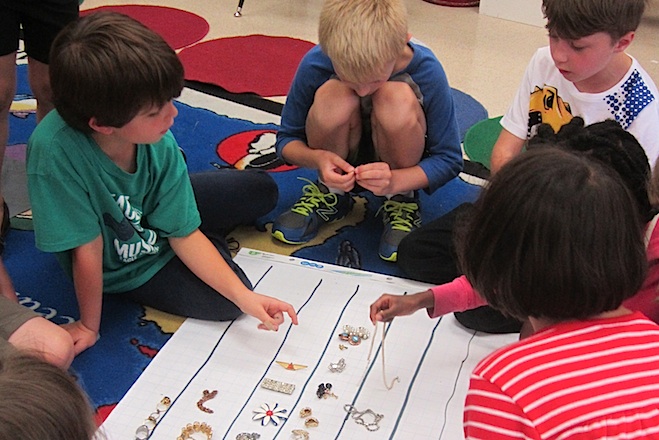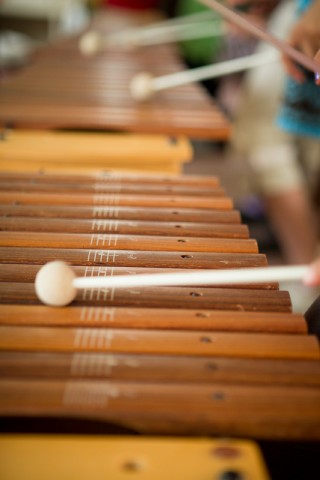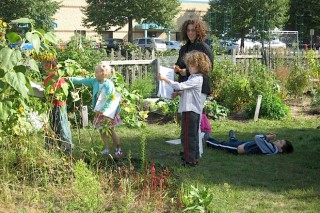When I donated a box of costume jewelry to Friends School of Minnesota, I didn’t expect to end up meeting with five 6-year-olds to discuss cameos and class rings.
My daughter and I had cleaned out her room this summer as she prepared to return to college. “What about this jewelry box? Keep or give away?” She made a frowny face, but decided to give it to Friends School of Minnesota, which she attended for nine years. Maybe they could use it in the dress-up area or in art class.
It turned out a 1st and 2nd grade classroom was approaching their learning this year as detectives, and their teacher had come to the office looking for something mysterious she could give the kids to investigate. The jewelry box was the perfect thing.
The students examined the box and discussed it for weeks before even opening it, I’m told. Now they wanted to ask me some questions about it.
When I came to school, I found out that their investigation of the box had led them to form three groups: one to make up imaginary stories about its contents, a second to detail and quantify the nature of its contents, and a third to find out its real story, its history.
Isn’t that an amazing reflection of different types of learning and creative expression? Humanities and fiction, science and math, and history. Each one valued, encouraged, and allowed to run its course with support from teachers.
The students in the “real story” group asked me: Why did I give the box? Where had it come from originally? Did I think any of the jewels were real?
The box contained clip-on earrings, lots of rhinestones, a 60s-era pin, a strand of pearls, a black and gold cameo, and a 1982 high school class ring. Each piece was lovingly examined by the students, some tried on or untangled.
Too soon our time together ended. But I left with a new love and respect for Friends School of Minnesota, which is so much what a school should be.
by Pat Thompson, a parent of a Friends School of Minnesota 2008 graduate



